How to Avoid Electric Bike Tire Punctures

Imagine meticulously planning a trip, preparing your electric bike, and packing all the necessary items. Everything seems perfect as you embark on your journey. However, just when you've barely begun, at the most inconvenient moment, you discover that your electric bike tire has gone flat. You're left feeling helpless, not knowing what to do...
So, this article is designed to prevent such a situation from happening. It will elaborate on how to avoid electric bike tire punctures.
Electric bike tires are composed of several components:
Tire Tread
Tread Pattern: The bottom of the tire typically features various tread patterns, and the design of these patterns affects the tire's performance on different surfaces. For instance, mountain bike tires often have deep and rugged tread patterns to provide superior traction and stability. Commuter tires may have flatter tread patterns to reduce rolling resistance, while cargo bike tires may prioritize durability and stability.
Sidewall: The sidewall is the tire's side, often bearing specifications and recommended pressure. The sidewall's structure can also impact the tire's performance and durability.
Inner Tube
The inner tube is the core component of the tire, typically made of rubber. It contains the inflated air, providing support and elasticity to the tire. The thickness and quality of the inner tube may vary depending on the type of tire.
Casing
The casing is a layer between the inner tube and the outer tire, often made of fiber materials such as nylon or polyester. The number of layers and material can influence the tire's structural strength and resistance to wear. For mountain electric bikes, a more robust casing is typically more suitable for tackling rough off-road trails.
Bead
The bead is located on both sides of the tire and serves to connect the tire to the wheel. Beads are usually made of steel wire or high-strength fibers to ensure a secure fit on the wheel rim.
Valve Stem
The valve stem is a small tube on the inner tube through which inflation and deflation occur. Different types of valve stems are used for various pressure systems, so it's important to match the correct valve stem type.
Causes of Tire Deflation
1.Sharp Object Puncture: This is one of the most common causes of tire deflation. Sharp objects such as glass shards, nails, thorns, or stones can puncture both the outer tire and inner tube, leading to gas leakage. Once the tire is punctured, the gas in the inner tube rapidly escapes, causing the tire to go flat. This affects ride stability and performance.
2.Inner Tube Aging and Wear: Over time, the inner tube undergoes aging and wear. The inner tube material becomes brittle and prone to cracks or small holes. Aged and worn inner tubes are more susceptible to deflation. Small holes or cracks may form on the inner tube, resulting in gas leakage.
3.Improper Tire Pressure: Incorrect tire pressure, whether too low or too high, increases the risk of tire deflation. Improper tire pressure subjects the inner tube to additional stress. Insufficient pressure can lead to the tire being squeezed, making it susceptible to sharp objects on the road. Excessive pressure may cause the inner tube to burst or damage the tire.
4.Improper Installation or Maintenance: Incorrect tire installation, removal, or maintenance can damage the inner tube or cause it to function improperly. Incorrectly installing the inner tube can trap it between the spokes and the outer tire, increasing the risk of inner tube damage. Improper maintenance can also result in inner tube damage or sealing issues.
5.Bead Issues: The tire bead is a critical component that connects the tire to the wheel. If the bead is damaged or improperly installed, it may not effectively seal the tire, leading to gas leakage even if the inner tube is not punctured or damaged.
6.Extreme Riding Conditions: Riding in extreme conditions, such as extremely high or low temperatures, adverse road conditions, or repeated impacts, can increase the risk of tire deflation. Tire materials and inner tubes are subjected to additional stress under extreme conditions, leading to deflation issues.
7.Overloading:Excessive load: exceeding the designed load range of the e-bike will increase the load and pressure on the tires, increasing the chance of a flat tire.
How to Properly Adjust Tire Pressure for Kingbull Electric Bike Tires
Owning an electric bike equipped with "fat tires" can offer a great riding experience, whether for city commuting or off-road adventures. However, maintaining the correct tire pressure is crucial. Adjust tire pressure according to different riding conditions for a better and more comfortable riding experience.
1.Soft Terrain (such as sand or snow): Keep the pressure between 18 and 20 PSI to ensure better traction and comfort.
2.Daily City Riding or Paved Roads: Maintain the pressure between 20 and 25 PSI to reduce rolling resistance and improve efficiency.
3.Heavy Loads or Long-Distance Riding: Keep the pressure between 25 and 30 PSI to ensure tire stability and durability.
Choosing the Right Electric Bike Tires for Different Types of Electric Bikes
Mountain Electric Bikes
Mountain electric bikes are typically used for rugged off-road and mountainous terrain. Therefore, selecting the right tires is crucial. Mountain electric bike tires are usually wider, with widths ranging from 2.2 inches to 2.5 inches, to provide ample contact area and enhance stability. Ensuring excellent traction and maneuverability across various terrains and conditions is important. Choose mountain bike tires with deep and rugged tread patterns and sturdy casings. This type of tire offers outstanding grip and slip resistance, suitable for uneven surfaces like dirt trails, mud, and gravel roads.
Commuter Electric Bikes
Commuter electric bikes are primarily designed for city riding, often on smooth road surfaces. Their tire widths typically range from 1.5 inches to 2.0 inches and feature flatter tread patterns to reduce rolling resistance. This design allows for swift and stable riding, enhances efficiency, and adapts well to urban road conditions. Commuter tires usually provide good stability and comfort, promoting a smooth ride.
Cargo Electric Bikes
Cargo electric bikes are used for transporting significant loads or passengers, demanding durable and stable tires. Sturdy cargo transport tires, with widths typically ranging from 2.0 inches to 2.5 inches, are suitable for carrying heavy loads. These tires feature robust sidewalls and wear-resistant tread patterns, ensuring adequate support and stability while accommodating substantial cargo.
When selecting tires, it's essential to consider riding conditions such as weather, road surfaces, and usage. Different tire types and characteristics will provide the best riding experience in various circumstances.
Methods to Prevent Electric Bike Tire Deflation
Regular Tire Inspection: Perform tire inspections on a weekly basis or before every ride. Examine the tire's exterior for potential punctures, scratches, or foreign objects. If sharp objects are found, promptly remove them to prevent punctures. Pay attention to the tire's sidewalls and casing for visible signs of damage. Ensure that the tire's internal pressure falls within the manufacturer's recommended range. Proper inflation helps reduce the risk of tire deflation and provides better riding performance and comfort.
Choose Appropriate Tire Types: Selecting the right tire type is crucial based on the type of electric bike and your riding requirements. Different types of electric bikes require different tire types to meet their performance, stability, and comfort demands.
Avoid Riding in Harsh Conditions: Try to steer clear of harsh riding conditions, such as areas with sharp rocks, broken glass, or dense nails. Opt for smoother roads to minimize the risk of tire damage.
Use Leak-Preventing Materials: Tire sealant, often in the form of liquid or gel, is typically made of latex, polymers, or other high-molecular-weight materials. It is injected into the inner tube, filling the inner tube space. When the tire is punctured by sharp objects, these sealants are pushed into the small holes or cracks and rapidly solidify. This effectively seals the leaks, preventing gas leakage and maintaining tire pressure.Installation of tire sealant usually involves removing the inner tube, injecting the sealant, and then reassembling the inner tube. Ensure proper installation following the product instructions. While it can automatically repair tire deflation issues, it is still advisable to perform regular tire checks and maintenance for safe riding.
Summary
Understanding the composition of electric bike tires and the causes of deflation, as well as choosing the right tire type, is crucial for a smooth ride on electric bikes. Additionally, regular tire inspection and maintenance, along with adherence to preventive measures, will help reduce the risk of tire deflation.







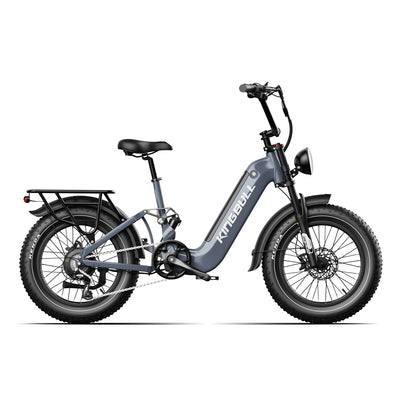
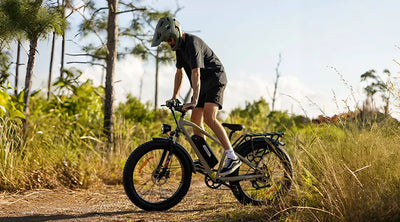

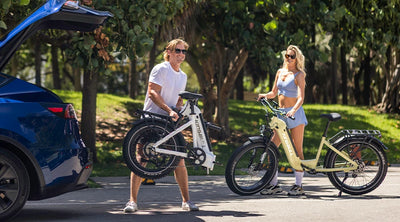
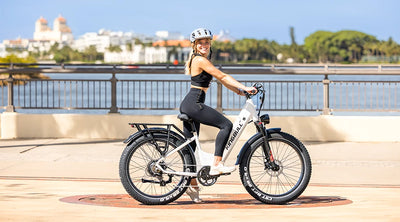
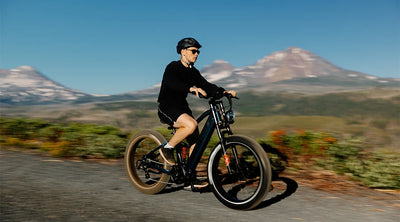















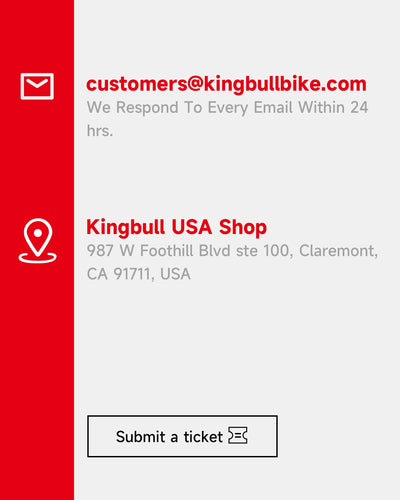



Leave a comment